Of Roses and Berries
Roses Come and Go
I once grew a beautiful, red rose known as Dark Lady. For all her beauty, she was borderline cold-hardy here. Many stems would die back to the graft, and the rootstock, which was cold-hardy, would send up long sprouts. Problem is that rootstocks are good for just that, their roots; their flowers, if allowed to develop, are nothing special.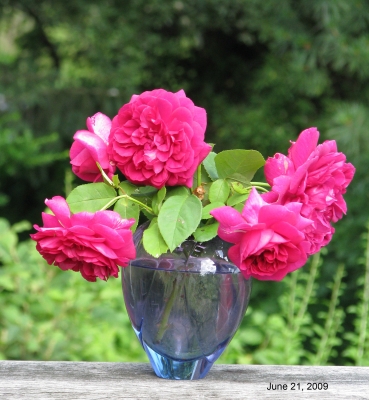 After a few years of watching the weakened plant recover each season, I made cuttings from some of the stems. The cuttings rooted and the new plants, rather than being grafted, were then growing on their own roots. Even a cold winter wouldn’t kill the roots, living in soil where temperatures are moderated. If the stems died back to ground level, new sprouts would still sport those dark, red blossoms.
After a few years of watching the weakened plant recover each season, I made cuttings from some of the stems. The cuttings rooted and the new plants, rather than being grafted, were then growing on their own roots. Even a cold winter wouldn’t kill the roots, living in soil where temperatures are moderated. If the stems died back to ground level, new sprouts would still sport those dark, red blossoms.
I planted my new Dark Lady in a bed on the south side of my house. There, with the brick wall of the house adding a few extra degrees of warmth in winter and spring, Dark Lady might better survive winters coldest nights and get a jump on spring. What’s more, the roots had ample soil to explore rather than being restricted within the narrow, dry bed along my terrace where the mother plant had grown.
The new Dark Lady grew reasonably well in its new bed, but still not as well as I had hoped. Dark Lady is one of the many “English roses” bred by David Austin to have the blowsy look and fragrance of old-fashioned roses coupled with disease resistance and repeat blooming of contemporary roses.
Dark Lady eventually petered out. She’s been superseded by some newer creations from David Austin: L. D. Braithwaite and Golden Celebration are standouts as far a hardiness and beauty, and I expect the same of Dame Judi Dench and Lady of Shalott.
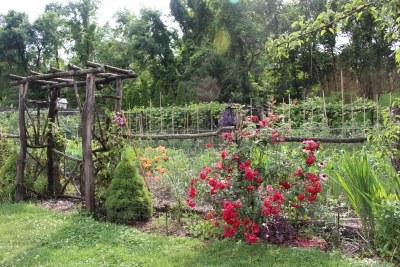
L D Braithwaite rose
Global warming has, no doubt, also been a help.
No Sharing of My Highbush Blueberries
Pity the poor birds. My fat, juicy blueberries have been ripening and now there’s a net between them and them. Putting up the net always brings the words of fruit breeder Dr. Elwyn Meader to mind. When I visited him back in the 1980s, the old New Englander, still active in his retirement and growing about an acre of blueberries, among other crops, recounted in his slow, New Hampshire accent, “It takes a patient man to net an acre of blueberries.” Covering my two plantings encompassing a total of about a thousand square feet always creates a little tension.
Putting up the net always brings the words of fruit breeder Dr. Elwyn Meader to mind. When I visited him back in the 1980s, the old New Englander, still active in his retirement and growing about an acre of blueberries, among other crops, recounted in his slow, New Hampshire accent, “It takes a patient man to net an acre of blueberries.” Covering my two plantings encompassing a total of about a thousand square feet always creates a little tension.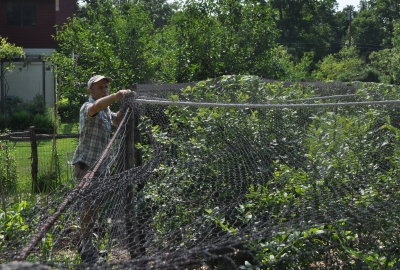 I now feel like a captain setting sail on an old sailing vessel, with all the sails trim and masts set. Except rather than sails and masts, it’s a blueberry net that’s spread tightly over the permanent, 7-foot-high perimeter of locust posts and side walls of anti-bird, plastic mesh. That netting covers 16 bushes within a 25 foot by 25 foot area. Rebar through holes near the tops of the locust posts keeps that side wall mesh taught and 18” high chicken wire along the bottom keeps rabbits, which love to teethe on that plastic mesh, from doing so.
I now feel like a captain setting sail on an old sailing vessel, with all the sails trim and masts set. Except rather than sails and masts, it’s a blueberry net that’s spread tightly over the permanent, 7-foot-high perimeter of locust posts and side walls of anti-bird, plastic mesh. That netting covers 16 bushes within a 25 foot by 25 foot area. Rebar through holes near the tops of the locust posts keeps that side wall mesh taught and 18” high chicken wire along the bottom keeps rabbits, which love to teethe on that plastic mesh, from doing so.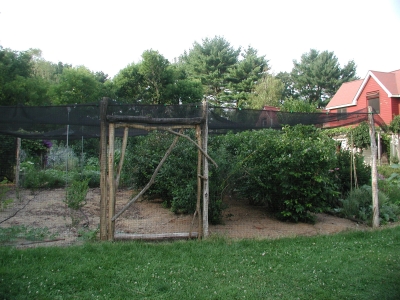 Don’t worry about the birds. They get their fill of berries elsewhere. I don’t net my lowbush blueberries, nor my mulberries or gumis. Birds don’t usually share the mulberries or gumis with me. This year, for some reason, they are sharing.
Don’t worry about the birds. They get their fill of berries elsewhere. I don’t net my lowbush blueberries, nor my mulberries or gumis. Birds don’t usually share the mulberries or gumis with me. This year, for some reason, they are sharing.
Juneberry, a Blueberry Look-alike
Birds also have free access to a blueberry look-alike, juneberries, the plants of which are sometimes called serviceberry, shadbush, and, in the case of one species, saskatoon. The bushes are common in the wild and, because of their pretty flowers, fall color, and neat form, also planted in landscapes.
Juneberries are small, blue, and dead-ringers for blueberries but have a taste all their own: Sweet with the richness of sweet cherries, along with a hint of almond. The birds seem to enjoy them as much as they do blueberries. Juneberries are related to apples and pears, not blueberries, and share some of their kin’s pest problems. Especially in my garden. They’re one fruit that didn’t grow well for me so, years ago, I finally dug the plants up.
Juneberries are related to apples and pears, not blueberries, and share some of their kin’s pest problems. Especially in my garden. They’re one fruit that didn’t grow well for me so, years ago, I finally dug the plants up.
Neither I nor birds need go far to find wild juneberries or bush or tree types planted for landscaping. They usually bear pretty well because of growing in microclimates more suitable than here on the farmden. In this low-lying valley, the air is too humid, cool, and conducive to disease.
With all the rain this spring, I’ve noticed that the crop on wild and cultivated juneberry plants has been hit hard by rust disease. I hear tell, though, that plants were bearing well at a nearby shopping mall: There, sunlight beating down on nearby concrete and, perhaps, less rust spores wafting about, create a microclimate conducive to good crops of berries.
——————————————
Any gardening questions? Email them to me at garden@leereich.com and I’ll try answering them directly or in this column. Come visit my garden at www.leereich.com/blog.

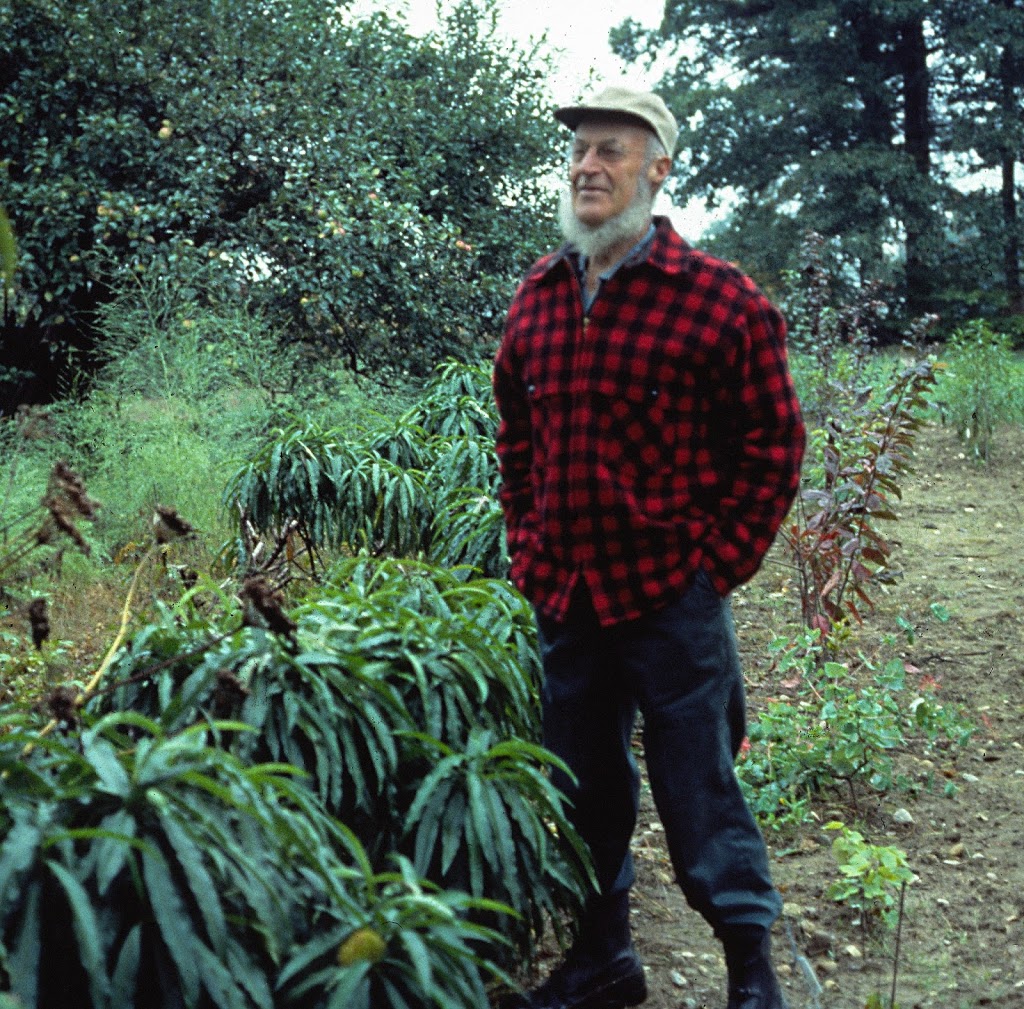

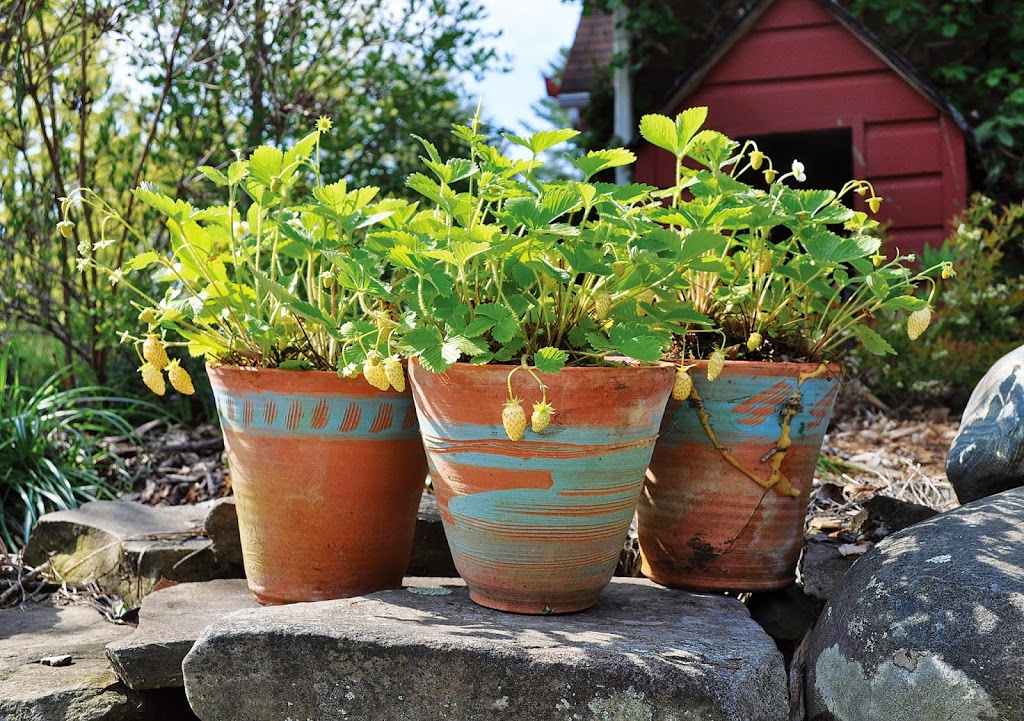

I moved to a 5 acre “farmden” type homestead 3 years ago and planted 35 blueberry bushes. We have a perimeter of forest around the property. I asked an old timer next door who has been farming his property for 30 years about covering his blueberry patch. He said “don’t bother as we have several perennial hawks nests in the forest”.
I was leery as to whether we would get any fruit but I didn’t net and sure enough, I could count on 1 hand how many fruit were damaged by birds on each bush. The neighbor also has 2 large cherry trees that barely look touched when harvest comes around.
Not sure if there is a strategy to attract hawks, in the same way you can put perches out for owls to combat rodents, but we have almost zero damage from birds on my blueberries, goumi and other soft fruit.
I happily have an abundance of daylilies. They range in colors from reds to yellows and one so pale I think of her as my ‘almost white.’
This year I noticed quite a few orange lilies in the garden. I didn’t plant this color.
Could the chosen color hybrid plants be seeding? This would account for the seed of an original mother plant used to breed the hybrid coming through, correct? Curious. What are your thoughts.
Natalie
Yes, the color hybrids could be seedlings. They could also be wild daylilies, which are orange.
I would love a few more pictures and description of your netting operation! I don’t quite get the rebar part and can’t see the photos well enough. I’m also wondering why you leave the gate and side net fencing up though out the year but add the top later on. Why wouldn’t you just leave the top netting on year round, too? Is it for pollination, and if so, can’t pollinators get through netting that’s small enough to prevent birds from getting caught? If it’s not for pollination, is it the weight of snow? Just seems like a HUGE headache to put up and take down every year. Obviously you have your reasons! Finally, you must use more than one piece to cover such a large area and attach them so birds can’t get through. Zip ties? But then it’s really huge. How do you store the top netting? It must be a mess to try to corral so it isn’t hopelessly tangled to be used the following season.
As you can probably tell, I have a bit of experience with netting. Somehow this 66 year old woman put up 8′ deer fencing around her 1 acre lot by herself, perched precariously on a step ladder on wildly uneven ground. I’m here to tell the story. But wow, is netting a bear to deal with! Yet I really prefer feeding the birds other berries and keeping the blueberries for myself.
The rebar goes through holes drilled near the tops of the locust posts. Wire wrapped around the rebars hold them together at their ends.
The reason I take off the top netting is because winter snow would pull it down. In the past I had to join pieces of netting together but the present net is one big piece I got from http://www.raintreenursery.com. Putting it up isn’t all that much trouble for two people. We get better at it each year; this year it was done in 30 minutes.
At the end of the season I roll and fold the net up and then put it in a large plastic garbage bag, tied securely.